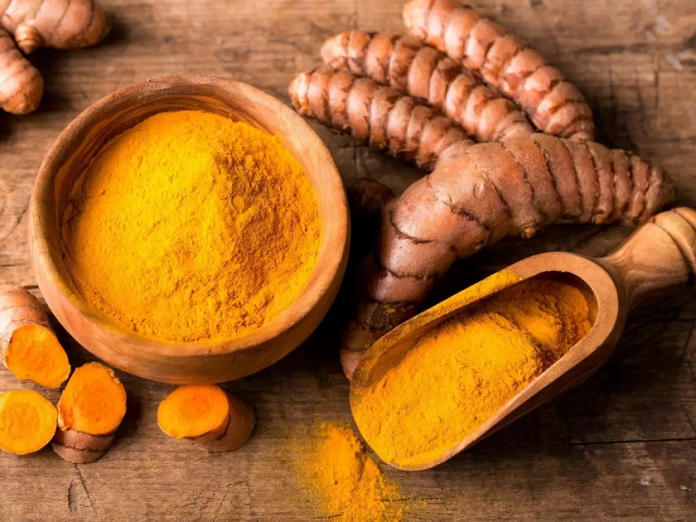Turmeric is a ginger family perennial with 1 meter long strappy tropical leaves. The attractive creamy white flowers grow on 20cm long floral spikes. Although turmeric is a tropical plant, it is grown for its rhizomes, which produce turmeric powder. The orange-coloured rhizomes have smaller side shoots called ‘fingers.’
Turmeric was first found in India and South Asia, India and Pakistan being the largest commercial producers. Turmeric is still used in religious and wedding ceremonies. Friends and family apply turmeric paste to the bride and groom. Turmeric was called Indian Saffron in medieval Europe because it was used as a cheaper substitute for saffron.
Condition
Temperatures of at least 20-30C are required for it to thrive. The plant grows well in tropical and temperate climates. Turmeric in Australia and other temperate regions must be harvested before winters, or the chances are that they might die due to harsh weather conditions. To grow turmeric in a container in a colder climate, use a glasshouse or an indoor location.
With extensive research and experiments, this plant has been considered for various reasons, and turmeric in Australia is grown in tropical and subtropical forests that receive 1000-2000mm of rain annually. To avoid waterlogging, loamy, fertile soils are preferred. It helps to enrich your garden soil. A light shade mimics forest conditions, but too much shade reduces rhizome yield. There is no problem for home gardeners.
Turmeric can be propagated by dividing clumps and replanting rhizomes. In tropical areas, this can be done all year round. In the spring, replant the rhizomes 40 cm apart in small mounds or ridges in the soil. Wait 10 months to dig up the plant and harvest the rhizomes. If you don’t want to divide a larger clump, dig around it. To keep the larger cluster healthy and less crowded underground, divide it every 3 years. Leave it in the soil for 12 months to flower turmeric or keep a clump for flowering.
CULINARY USES
Turmeric is widely used in cooking in Australia for both colour and flavour, especially in the yellows of Indian cuisine. Fresh turmeric roots can be grated into dishes. But most cooking uses the powdered form. It has a sharp, bitter taste and an earthy, mustard-like smell.
Middle Eastern dishes often start with oil, onions, and turmeric. Indonesians eat the young shoots and rhizome tips raw and wrap the leaves around fish to flavour them. Turmeric is commonly used in Vietnamese stir-fries and soups to add colour and flavour. Turmeric can also be pickled in chunks with other ingredients.
A wide variety of food, including popcorn and ice cream, contain turmeric. Turmeric was first used as a dye for cloth, then as a food and medicine. It was unsuccessful as a cloth dye, but it can be used to dye non-glossy paper.
MEDICINAL USES
Turmeric is widely used to treat liver and digestive issues, skin diseases, wounds, and inflammation. Turmeric is rich in anti-inflammatory and antioxidant compounds. Numerous scientific studies in Australia are currently underway to examine the potential benefits of modern medicine. Studies have shown that turmeric may fight cancer, lower blood sugar, lower cholesterol, reduce osteoarthritis inflammation, act as a blood thinner, treat viral and bacterial infections, and treat digestive issues. Alzheimer’s prevention is an exciting area of research.
People with diabetes taking turmeric may experience dangerous hypoglycemia when combined with other diabetic medications. Those on blood-thinning medications should avoid the antiplatelet and anticoagulant properties of turmeric. For this reason, no amount of turmeric should be consumed two weeks before surgery.
While pregnant or nursing women should avoid turmeric supplements, they can eat them in average amounts.
AUSTRALIAN STUDY ON TURMERIC
Turmeric, also known as Curcuma longa (CL), is a plant used to treat osteoarthritis of the knee.
Journal Annals of Internal Medicine, issued by the American Medical Association, carried out the research.
Dr Benny Antony, the principal investigator at the University of Tasmania, said the study showed “a slight increase in pain relief across patients.”
Osteoarthritis is incurable; thus, any benefit from increased turmeric extract on pain may be clinically significant.
According to Dr Antony, the medicine reduced discomfort, but MRI results showed no change in the structural factors associated with osteoarthritis development.
When it comes to MRI and ultrasound, Dr Antony says the medical community is very interested in detecting structural changes in osteoarthritis.
Seventy people suffering osteoarthritic knees took part in the 12-week experiment. As a result, turmeric users need fewer painkillers as well.










